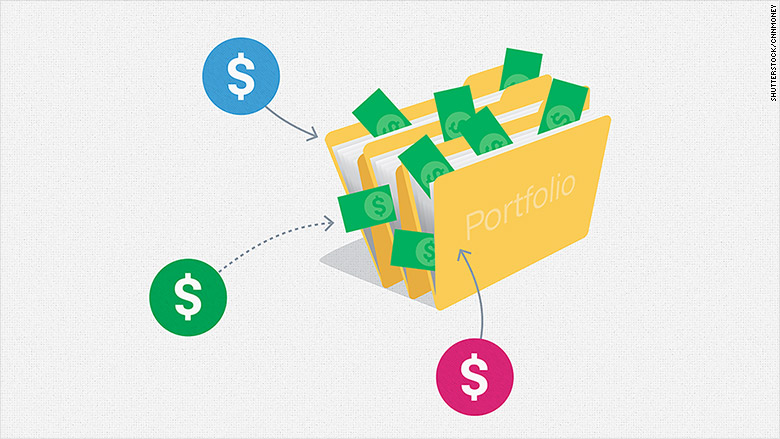 I’ll admit that deciding which index funds to invest your retirement savings in may not rank at the top of most people’s list of the favorite ways to spend their free time. But if you find the exercise exhausting, it’s probably because you mistakenly think you’ve got to pore over the confusing array of index choices available these days.
I’ll admit that deciding which index funds to invest your retirement savings in may not rank at the top of most people’s list of the favorite ways to spend their free time. But if you find the exercise exhausting, it’s probably because you mistakenly think you’ve got to pore over the confusing array of index choices available these days.
Over the last decade or so, the financial services industry has churned out index funds and ETFs that follow virtually every obscure market niche and wacky benchmark that’s out there. And when that wasn’t enough, investment firms dreamed up new ones. (One example: The Obesity ETF , ticker symbol: SLIM ( SLIM ) , which tracks the Solactive Obesity Index.)
Fortunately, you don’t have to keep up with every new variation of index fund or ETF that Wall Street marketing departments drum up. On the contrary, the best way to reap the benefits of index funds — instant diversification, low-costs, the ability to create a well-balanced portfolio with just a few funds — is to keep it simple.
Related: Is now the time to invest my retirement savings in stocks?
How simple? Well, you can create a perfectly decent retirement portfolio with just two index funds (or their ETF counterparts): a total U. S. stock market index fund and a total U. S. bond market index fund. You’ll have exposure to virtually every domestic publicly traded stock (large-, mid- and small-caps, growth and value shares, all industries and market sectors) and pretty much the entire U. S. investment-grade taxable bond market (Treasury and other government bonds, corporate issues, mortgage-backed securities, all in short- to long-term maturities.)
If you invested in no more than those two funds, you could sit back and congratulate yourself on a job well done. But if you’re willing to put in just a little more effort, you could get even more diversification by devoting, say, 20% to 40% of your stock stake to a total international stock index fund, which would give you exposure to the stock markets of countries large and small around the globe.
The case for doing this is that not all countries‘ stock markets move in lock-step. By throwing a total international stock index fund into the mix, you can dampen the ups and downs of the stock portion of your portfolio, as the shares of some countries may be rising while those of other countries are falling.
This won’t totally insulate you from big market setbacks. When the U. S. market takes a big tumble, as in 2008, foreign markets tend to drop right along with it. That said, over the long run a stock portfolio that includes both domestic and foreign shares should be less volatile than one with U. S. shares alone.
You could also further diversify the bond portion of your portfolio by investing, say, 20% to 30% of your bond holdings to a total international bond index fund, although, frankly, I don’t think an international bond portfolio is anywhere close to a „must have“ element for the portfolio of most individual investors. (Even a research paper by Vanguard on the potential benefits of owning international bonds ends by suggesting that investors „should consider adding“ international bonds to their portfolio. Not exactly a rallying cry.)
So while I’d say that a little more diversification on the bond front can’t hurt, especially given all the uncertainty about interest rates these days, I don’t think you’d be sabotaging yourself if you decided to skip such a fund altogether.
Asset allocation: Fix your mix
You should have no trouble creating a portfolio along the lines I’ve suggested above, as such funds or their ETF counterparts are available from, among others, such well-known investment firms as Fidelity, Schwab and Vanguard, in some cases for as little as 0.03% a year in operating expenses.
More important than whether you decide to go with the two-, three- or four-fund version of the index-fund portfolios I described above, is how you divvy up your money between stocks and bonds. The stocks-bonds mix you settle on will reflect such factors as your age, how soon you expect to be tapping into your retirement stash and your risk tolerance , or how amenable you are to seeing the value of your retirement portfolio drop during the market’s periodic meltdowns.
Generally, the younger you are, the farther you are from retirement and the more volatility you’re willing to accept, the more you’ll want to tilt your holdings toward stocks. To get a sense of what blend of stocks and bonds is appropriate for you, I suggest you go to the Vanguard’s free risk tolerance-asset allocation questionnaire , which will recommend a stocks-bonds allocation.
Once you’ve settled on a blend of stocks and bonds you’re comfortable with, don’t meddle with it, except to rebalance occasionally or perhaps to gradually tilt more toward bonds as you near or enter retirement.
If you feel that putting together one of the relatively simple portfolios I’ve outlined above is too taxing — or you’re just not confident of your ability to do so — there’s an even simpler solution: buy a target-date retirement fund. By investing in a target-date fund with a date that corresponds to the year you expect to retire (2020, 2025, 2035, etc.), you get a mix of stock and bond funds that’s not only appropriate for your current age but that also automatically shifts to a more conservative mix as you age. Most investment firms don’t offer target-date funds that invest solely or primarily in index funds, but Fidelity, Schwab and Vanguard do.
Bottom line: Creating a retirement portfolio with low-cost index funds doesn’t have to be all-consuming or exhausting.






